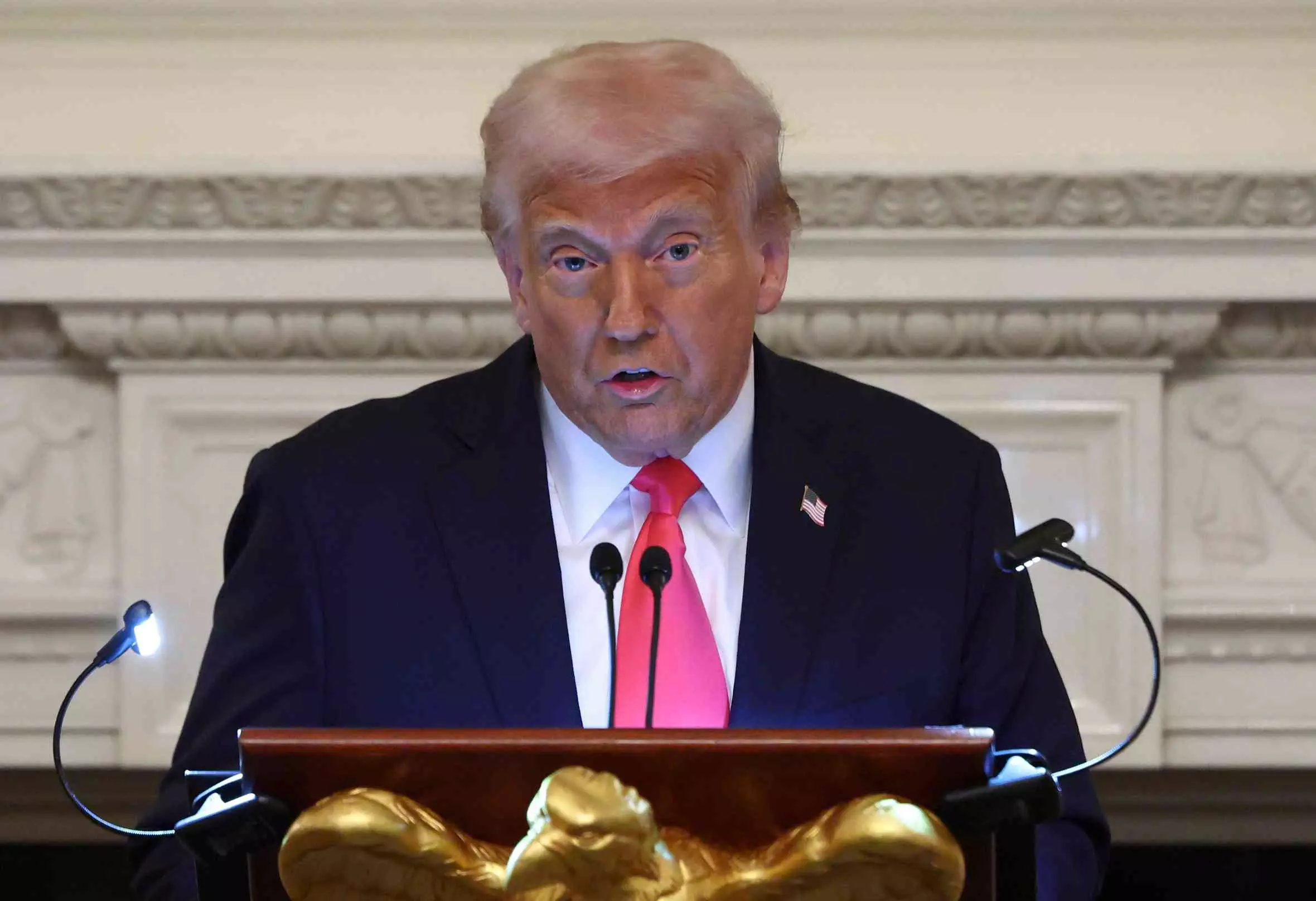
Trump tariff cuts: World waits in fear; India quickly finalises terms for US trade deal
A day before Trump's new tariffs kick in, India finalised terms for US trade deal with intervention of Modi’s office; can India escape April 2 tariff plan?

The world, including global stock markets wait in fear for US President Donald Trump’s sweeping 'Liberation Day' tariff cuts.
Trump is all set to unveil his administration's "reciprocal tariffs" on Wednesday (April 2) afternoon, at a big event at the White House Rose Garden.
There is no clarity on what these tariffs, aimed at countering unfair trade imbalances with countries that target the United States, will be. But global stocks remained volatile.
The uncertainty has shaken markets, prompted economists to cut their growth forecasts and forced central bankers to factor in the potential inflationary impact of import costs.
Meanwhile, Trump’s team continued to thrash out their options ahead of the event scheduled to begin as US markets close on Wednesday. Cabinet officials and lawmakers have been invited to the announcement, along with workers and executives from the US steel industry.
India finalises terms for US trade deal
A day before the new tariffs kick in, India has quickly finalised the terms for the US trade deal with the intervention of the Prime Minister Narendra Modi’s office. India has agreed to the Terms of Reference for the Bilateral Trade Agreement with the US, said news reports.
Both sides are now ready for formal negotiations. In this deal, India is expected to lower tariffs on American goods in exchange for US concessions, said reports quoting government officials.
This was also confirmed by US President Donald Trump when he told the media on Tuesday that India is willing to cut tariffs.
But whether this will translate to India getting relief from sweeping US tariffs remains to be seen.
Trade barriers between India and the US
However, there are many concerns the United States Trade Representative (USTR) has raised in its report ‘Foreign Trade Barriers’, which covers 29 major partner countries. The concerns that the report raises for India range from Internet shutdowns and dairy feed rules to restrictions on imports of agriculture and GM foods.
The USTR report slammed trade barriers in India, which range from “localised internet shutdowns that disrupt commercial operations” to regulations requiring that “dairy products intended for food must be derived from animals that have not consumed feed containing blood meal”. It also drew attention to the fact that no specific laws existed for “trade secret protection”. According to the US, this is a "significant" issue, along with long waiting periods for patent grants.
Another issue that the US has pointed out is that India’s price caps on coronary stents and knee implants have not “kept pace with inflation”. They also do not take into account “production costs” or innovation, and this can discourage American companies.
What kind of tariff cuts are expected from Trump administration?
According to reports, several proposals are said to be under consideration, including a tiered tariff system, which will have a bunch of flat rates for countries. There could be either a flat 10 per cent or 20 per cent rate on goods depending on the country's tariff and non-tariff barriers on US goods. Fox News said Tuesday that Trump was considering a flat 20 per cent global tariff.
The Washington Post too reported that White House aides have drafted a proposal to impose tariffs of around 20 per cent on most imports to the United States. Amid all the speculation, the White House on Tuesday stayed silent on the details of Trump’s plan. There is also speculation that there may be a customised tariff structure planned for each country.
Also read: Trump’s ‘Liberation Day’ of tariffs is coming; how is India gearing up for it?
The 'Dirty 15'
US Treasury Secretary Scott Bessent recently referred to a group of nations as the “Dirty 15,” which he described as the 15 per cent of US trading partners that impose steep tariffs and other trade barriers on American goods. India, China, EU, Mexico, Japan, Switzerland, Italy and Thailand among others figures in this dirty 15 countries.
According to reports, it is speculated that under a two-tiered approach, the highest levies would be applied to the countries seen as the biggest offenders, both in terms of true tariffs as well as easily quantifiable non-tariff measures that act to deter US imports. Trump’s White House this week has complained about the trade practices of the EU, Japan, India and Canada, for example.
Yet, there is no clarity as of now on which countries tariffs will be imposed on and what rate.
Customised approach
Another approach that is being discussed in reports is that the US could apply individualised targeted reciprocal rates, tailored to countries based on their existing levies and non-tariff barriers. This approach purportedly was on the cards for weeks but some recent deliberations suggest it’s no longer the main focus.
Regardless of the approach Trump ultimately settles on, the levies could apply widely, even to countries with which the US doesn’t have a trade imbalance, said reports. These taxes are expected to amount to one of the biggest new import taxes in US history.
But, according to some reports, it was also suggested that Trump will be open for a “good negotiation”, after the rates are announced.
These levies are also expected to trigger a set of fresh negotiation with countries, many of which have already kicked off discussions with administration officials ahead of the announcement. So, rates are expected to continue to evolve over the coming weeks and months.
When will tariffs come into effect?
However, new levies can come into place immediately and can potentially affect cargoes already en route to the US.
While the White House said tariffs would take effect immediately, it’s most likely that they would be imposed at 12.01 a.m. New York time on Thursday, when other levies on auto imports are due to kick in.
Trump wants to raise $700 billion annually in tariff revenue.


